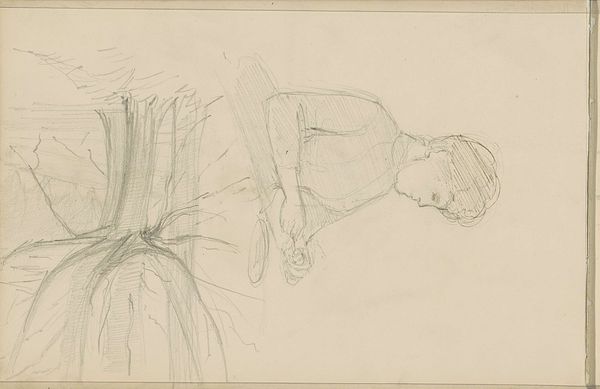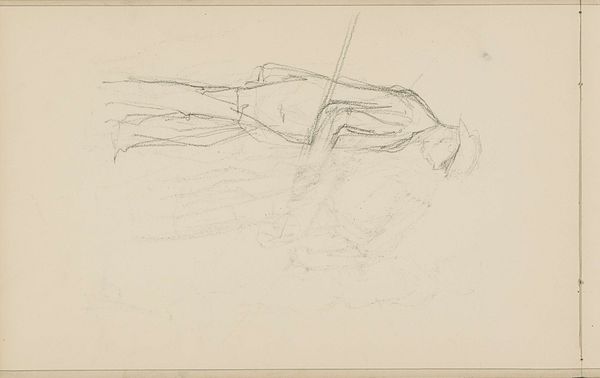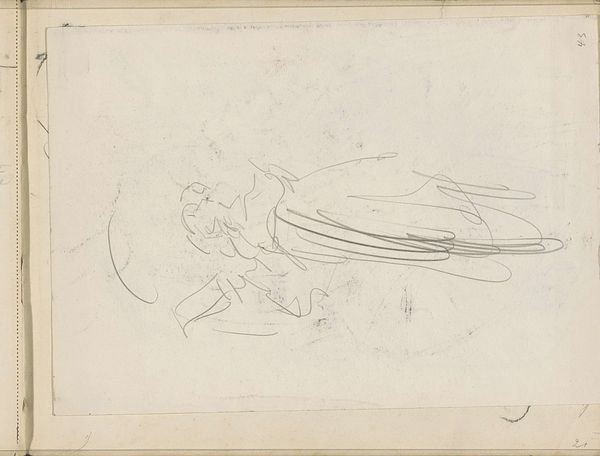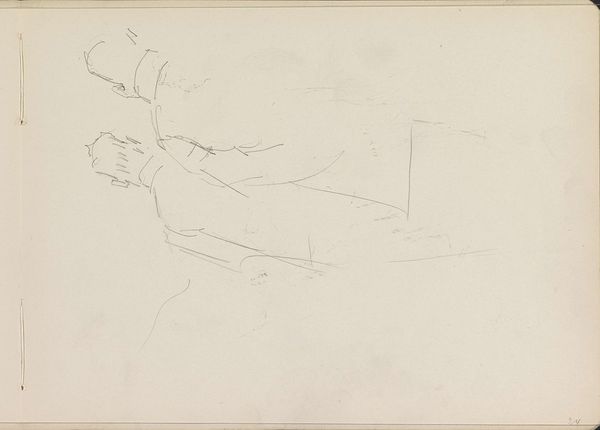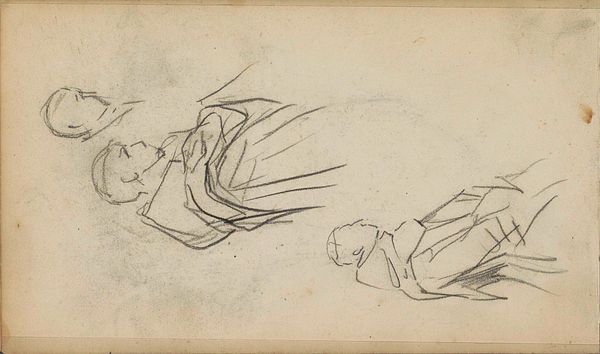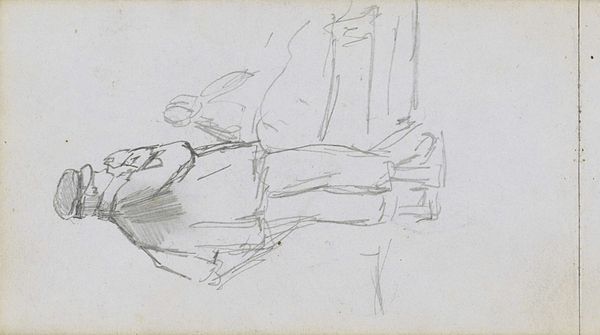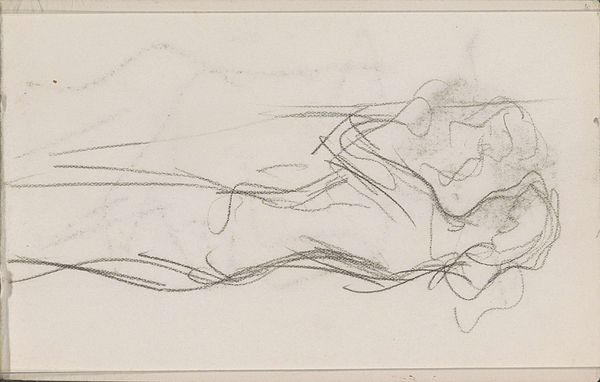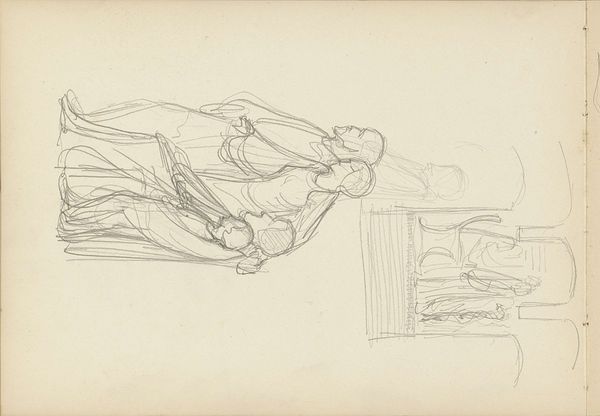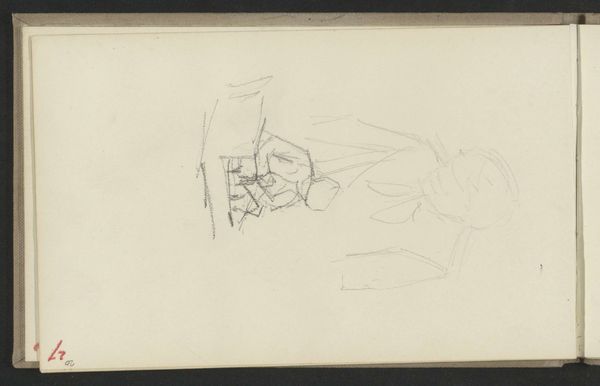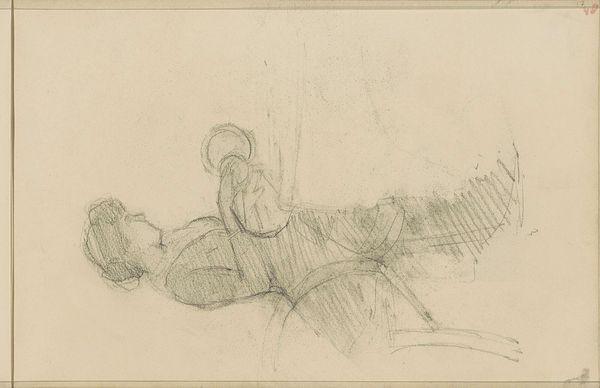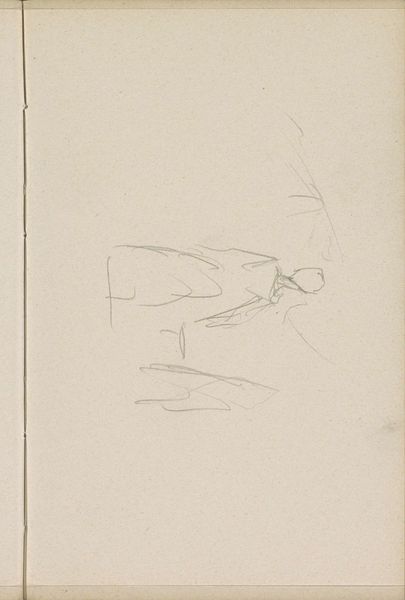
drawing, pencil
#
portrait
#
drawing
#
pencil sketch
#
figuration
#
pencil
Copyright: Rijks Museum: Open Domain
Curator: Here we have a drawing titled "Alphons Grandmont, staand aan een tafel," created between 1892 and 1913. It is a pencil drawing. Editor: Immediately, the tentative quality of the line work gives it an ephemeral feeling, like a ghost just barely materialized from memory. Curator: Yes, and if we think about it as a pencil sketch, its value lies in that tentative exploration. Consider the rough paper it's on—likely inexpensive, meant for study, not necessarily presentation. What can it tell us about the labor, the artistic process? Editor: The subject’s clasped hands are particularly evocative. They remind me of traditional depictions of supplicants in prayer, almost begging for mercy or wisdom. This contrasts intriguingly with the man's somewhat formal attire; that creates a kind of internal visual tension. Curator: Interesting you point that out! Notice, too, how the sketch doesn't focus on clothing details? It directs the viewer towards understanding Grandmont as a presence – there’s an every-man quality about the sitter who transcends a particular era in this simple presentation with simple means. The economy of strokes itself creates this effect. Editor: Precisely. Even the table—or what we can discern of it—holds a symbolic charge. A table can represent support, structure, or even communion. The way Grandmont interacts with it seems to be indicative of his character. Curator: That interplay between the grounded table and the rather wistful face offers a counterpoint. It pushes and pulls between concrete reality and interior contemplation. A very cost effective tension, wouldn’t you say? Editor: The more I consider it, the more I appreciate the blend of yearning and stoicism it evokes through carefully chosen symbolic components. Curator: Indeed, by deconstructing how such emotional resonance can be crafted from rudimentary materials, we get insight into not only the depicted image but how an emotional experience might take form by any artist using the same, rather unassuming methodology. Editor: For me, that close reading reveals that even an apparently simple sketch carries echoes of cultural memory and emotional complexities, prompting the viewer to consider themes of presence, supplication, and self-representation. Curator: It’s a potent lesson in resourcefulness – less being more – isn’t it?
Comments
No comments
Be the first to comment and join the conversation on the ultimate creative platform.
